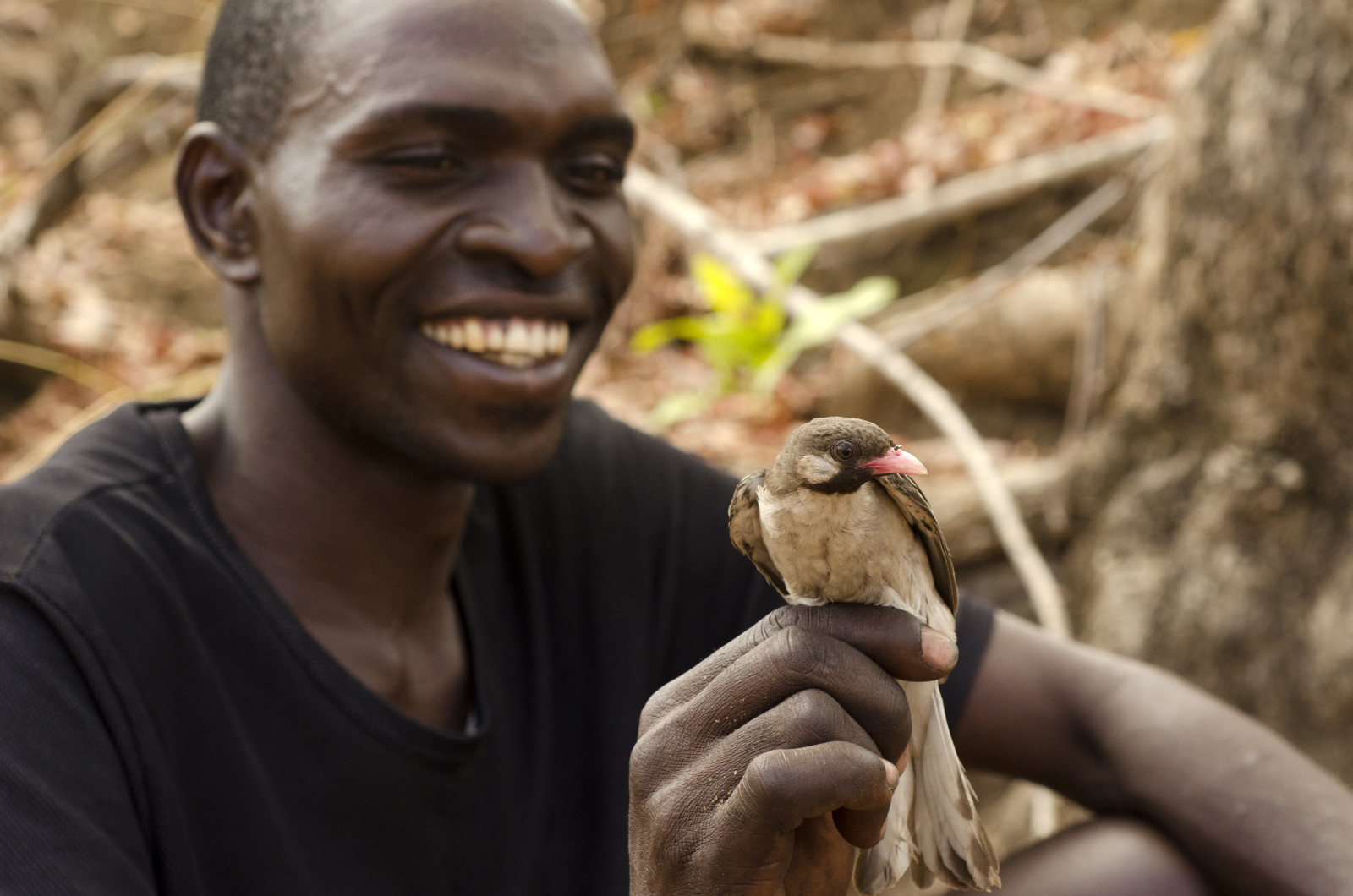A sweet tale of cooperation
Interview with
The honey guide is a wild bird native to Africa and Asia. Incredibly, these wild birds naturally respond to calls from human honey hunters and lead them to bees' nests. The people subdue the bees and get the honey while the birds take the leftover wax. Connie Orbach spoke with University of Cape Town researcher Claire Spottiswoode who's been out to Mozambique to study the phenomenon...
naturally respond to calls from human honey hunters and lead them to bees' nests. The people subdue the bees and get the honey while the birds take the leftover wax. Connie Orbach spoke with University of Cape Town researcher Claire Spottiswoode who's been out to Mozambique to study the phenomenon...
Claire - So that was the sound of a Ziwere honey hunter in the Niassa National Reserve in northern Mozambique and he was summoning a bird from the bush to help him... 'brrr-hm'. And then you heard the chattering of a small brown bird: the greater honeyguide, which is an intriguingly odd species. Its favourite food is wax and it cooperates with our own species to get it.
So honeyguides love wax and they know where bees nests are located but there aren't much good at doing battle with the bees to get it out of their nests. Whereas human, by contrast, as everyone knows, love honey and are experts at getting into these nests with the help of fire and tools. So the bird, through its calls and behaviour, indicates the location of these nests to honey hunters and, in turn, humans use their sophisticated tools and fire to create smoke to subdue the bees to open the nest and expose the wax for the honeyguides, and the honey for the humans.
Connie - That's amazing. And so these honeyguides are wild?
Claire - Yes, they're not domesticated, or tamed, or taught, or coerced in any way.
Connie - And you've been studying this - what have you been looking into?
Claire - Well, our aim was to distinguish whether honeyguides could specifically recognise and respond appropriately to signals directed at them by honey hunters. So we recorded a number of honey hunters making that special sound 'brrr-hm'. And then we recorded the same individual honey hunters giving arbitrary noises that we asked them to call out, and these were either their names or words in the local Yao language for honey and honeyguide.
So if honeyguides specifically recognise the information content of the "brr-hm' sound, then they should be more likely to respond to a human making that sound versus other arbitrary human sounds that don't carry the same specific meaning.
Connie - And you found that there was a relationship between that specific sound, that I'm not going to do because I'd make a fool of myself, as opposed to the control sounds you used?
Claire - Yes, when we made the 'brrr-hm' call, we were twice as likely to be guided by honeyguides compared to the control sounds. Not only that, when we made these arbitrary human noises or arbitrary animal noises, honeyguides often lost interest and stopped guiding us. So the upshot of all that was the overall chance of being shown a bees nest by a honeyguide was actually more than tripled from around a 16% success rate to a 54% success rate.
Connie - So this need for a specific word - does that mean there's some sort of language going on? Are the honey hunters speaking to the honeyguides?
Claire - Certainly from a layman's perspective, i.e. my perspective as someone who's not a linguist, it certainly does seem like a kind of proto language where bird species understand the specific signals that they're giving to one another.
Connie - And so what do you think led to this interaction? Is it just a behavioural adaption that the birds learned through their lifetime or do you think there's more to it than that?
Claire - Well honeyguides, they're also brood parasites, so like cuckoos, they lay their eggs in other birds' nests and foist the cost of raising their young onto other species. So one intriguing consequence of this brood parasitic start to life is that honeyguides don't have the opportunity to learn from their own parents, so our best guess is that their propensity to guide humans is probably genetically inherited.
Having said that, we've now seen a remarkable local adaptation to a specific signal used by a particular human population co-existing with honeyguides and again, this is only a guess, but our best guess is that those local refinements are probably acquired through learning rather than being genetically inherited.
Connie - So, if this is an evolutionary adaptation, that gives me the idea that this should have been going on for a very, very long time. How long have the honey hunters been cooperating with birds and where did their language come from?
Claire - So to answer your first question about the age of the human-honeyguide association in general - well it's hard to say but it's probably very ancient indeed. But you also asked me about the origin of the particular call that humans use to cooperate with honeyguides and I've asked this question to the Yao honey hunters in Mozambique on many occasions, and they always say to me well we do it because our dads did it, they learnt it from their dads and we really have no idea. It's just something that we do. Intriguingly they also say "no-one will disturb this thing." What it emphasises is that there's no incentive for any individual honeyguide to use any other signal because, of course, they'll end up finding less honey. So there's a sort of positive reinforcement that maintains that language in the population.










Comments
Add a comment